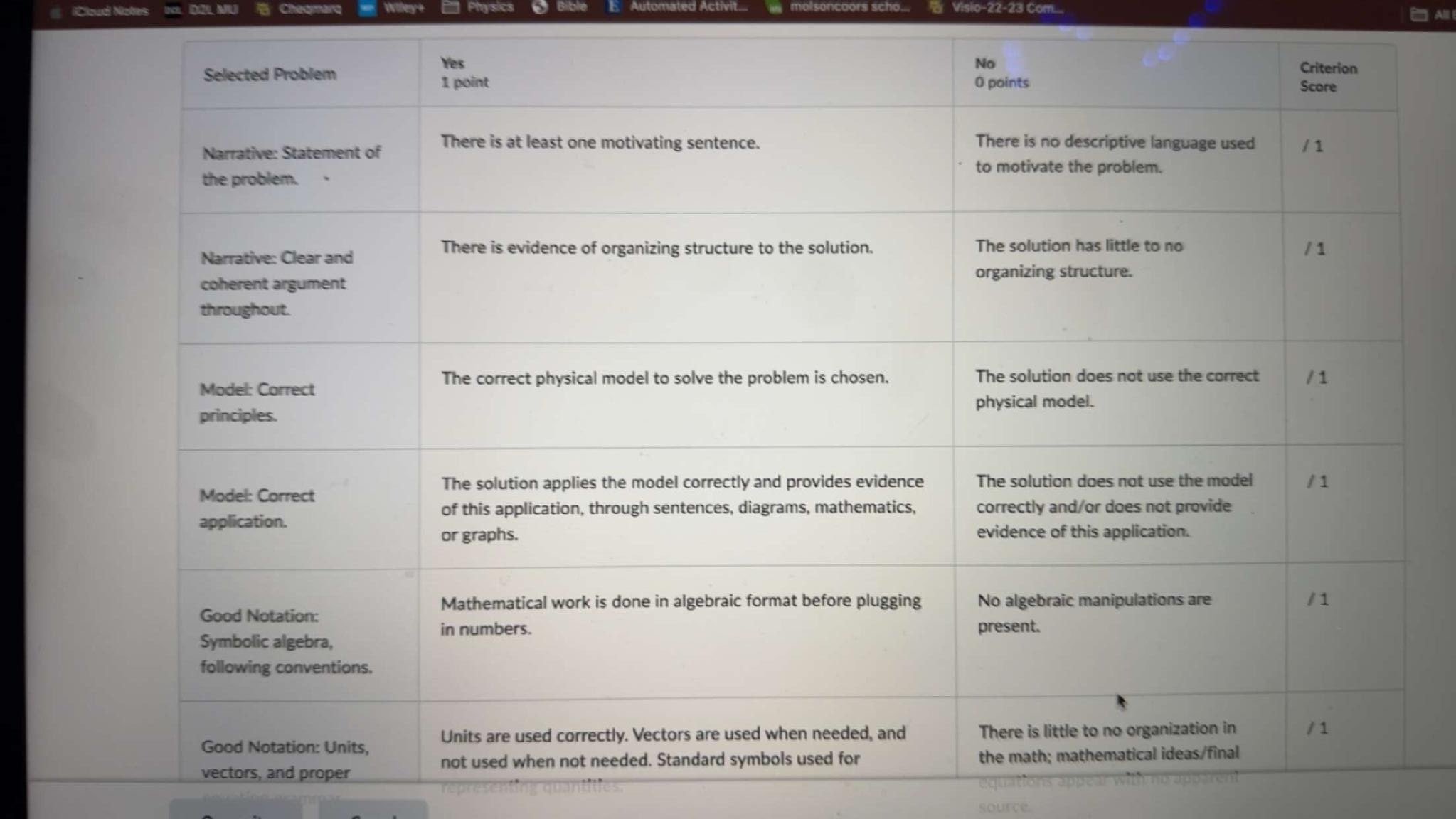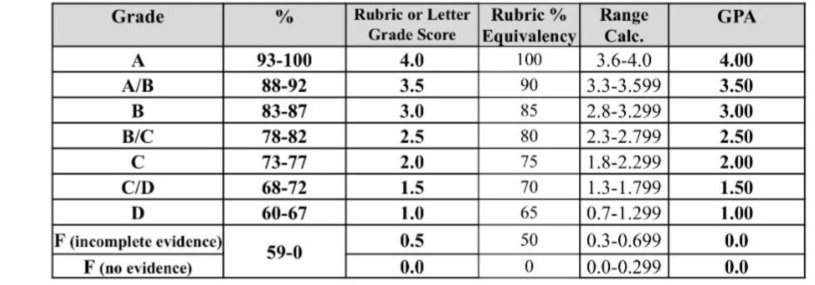Standards-Based Rubrics: Are These the Standards Hamilton Needs
Photo from Hamilton school district communication.
Sriya Gannapureddy & Nina Wolff
Hamilton is undergoing various changes next school year: the unweighting of GPAs, the newly-introduced Laude System, and the revised grading scale are just a few to name. What you may not have heard about is the change in student evaluation. All Hamilton departments nearing the fifth year of the curriculum cycle, a five-year intricate plan detailing the necessary steps needed to move forward with major changes, will be shifting to standards-based rubrics in upcoming years. Communication Arts is already in full implementation while Social Studies and Science are fully transitioning to standards-based rubrics next year. All other subjects will follow suit in about two to three years. Before we dive into the details of the new rubrics, here is what prompted the change in student evaluation.
What primarily initiated the change was that administration identified inconsistencies in grading between teachers teaching the same class. As parents expressed concern, the administration decided to introduce a system-wide grading change to resolve this problem. The purpose of this change is also to solve issues with feedback on assessments and increase students’ quality of learning. According to Mrs. Cathy Drago, the Assistant Superintendent, “We want to be able to guarantee to any parent, student, or community member, that in every class, regardless of what teacher you have, there is an agreed-upon set of knowledge and skills that we should have when we come out of that class.”
Rubrics
Above is a sample of a Communication Arts rubric.
This change in scoring reflects a recent Hamilton School Board vote.
The picture above is a sample of what the Hamilton rubrics will look like. At the top of the rubric, you can find the state standard that is being assessed. Below this, you will find levels of understanding and student-designated “I-can” statements in each level. Next, there may also be teacher-designed “look-fors” in each level (not shown in the picture above). These are key components in determining which level of understanding a student falls in. Lastly, below each level are percent conversions. Based on the recent school board vote in January, these percentages will change next year to reflect the newly adopted grade scale and .5 increments (see Updated scale image). In this system, Beginning is generally considered a 1, Developing a 2, Proficient a 3, and Excelling a 4, though a teacher could give half points between those categories to reflect a student’s level of mastery. The goal of the administration is to eventually implement these rubrics in all subjects across all grade levels. It is important to note that the rubrics will be used to assess and score student work at the high school, but that grades will be reported using the new A, AB, B, BC, etc. system.
Rubrics at the Primary Level
Currently, standards-based rubrics are being used at the elementary and middle school level. There has been positive feedback from teachers and students. Teaching and Learning Coordinator Mrs. Whitney Roth, stated, “Instead of getting a score back on a test and putting it in their folder, they are taking the time to look at their work and analyze it against the standard in the rubric and go back and forth and say, ‘What did I do? What didn’t I do? And what do I need to do next time?’ And feedback is one of the greatest indicators of growth and achievement in kids.” We agree that these rubrics do a good job of communicating the growth and understanding of students at the primary level. These rubrics fit with the younger grades' simpler and less broad concepts.
Rubrics at the Secondary Level
While this may be ideal for younger grades, we have reason to believe that this may not be the case for the high school level. As high school seniors who have been exposed to many types of grading, including virtual over the pandemic, we were both intrigued by the grading changes occurring. We’ve had two 80-minute long meetings with Dr. Mielke, Superintendent of Hamilton School District, Mrs. Roth, Teaching and Learning Coordinator, and Mrs. Drago, Assistant Superintendent of Hamilton School District. We’ve also had the opportunity to survey several Hamilton alumni from high-standing universities. After assimilating knowledge from various sources, we’ve identified areas of concern worth mentioning at the high school level.
Oversimplification of Feedback
To begin with, administration believes that rubrics will give students more effective feedback. Mrs. Drago stated, “The rubrics give kids a chance to get specific feedback instead of just a score.” After being exposed to many different types of rubrics, we believe the new standards-based rubrics do not encourage individualized feedback. The most effective feedback we have received is annotations directly on tests and papers, as it is specific to our performance. Checking off a box on the rubric is not beneficial to the student because it is difficult to determine what specific criteria were lacking in their assignment. The rubrics may even take away the personalization factor from our learning experience as some teachers have shifted to check boxes on the front of the rubric versus leaving more personalized feedback on the assignment itself. Although many teachers utilize the rubric while also leaving specific feedback on the assignment, this is time-consuming and redundant. The rubrics oversimplify the feedback students are receiving directly on the assignment to such a degree that the rubrics are not beneficial.
The rubrics being mandated can lead to a few different scenarios: Students will instead only read the feedback directly on the assignment, making the rubric unnecessary, or they will only read the rubric to see their score, which does not provide adequate feedback. When interviewing Ishani Shastri, a junior at Hamilton, she voiced her concerns about herself and (allegedly) many of her classmates who’ve experienced being graded on a rubric. Shastri states, “The wording on them [the rubrics] doesn’t make sense, and I’m unclear of what the teacher wants from me. When I get it back, it’s just like a number circled. There is no proper feedback and I’m not sure what I did well and what I did poorly.”
Audrey Balsbaugh, also a junior at Hamilton, adds that the rubrics she’s come across this year in her classes were not beneficial to her learning and understanding of content. “We have trouble understanding what specifically we got wrong just from looking at the rubrics because they only tell us what skills we were lacking, but it is not specific to our work,” states Balsbaugh.
Though a lack of specific feedback can be a problem with any grading system, we believe that the rubrics are not doing enough to facilitate a better understanding in students of why they were scored a certain way.
Difficulties Adapting to Different Rubrics
Currently, students are exposed to various grading styles across all departments. The diversity in evaluation is crucial to the success of many students in college. 87% of Hamilton students are college-bound, and we have a 4-year graduation rate of 97%, making college readiness of utmost importance.
Mrs. Drago stated in one of our interviews, “If we are going to base what we do on what colleges and universities do, which we know aren’t necessarily on best research-based best practices, we are doing a disservice to our students.” However, this viewpoint directly contradicts what many students want.
On March 7, 2022, twelve Hamilton teachers and twelve Templeton teachers administered student focus groups. Each group consisted of about 4-12 students, a teacher facilitator, and a teacher notetaker. In the teacher debrief, some feedback from the high school focus groups indicated that “Kids said they preferred grades over rubrics. They want to be prepared for college. They don’t mind them if they’re essays or projects, etc. They want a mixture to prepare for college.” Being exposed to different grading styles forces students to adapt to different classes.
We interviewed several Hamilton graduates, now at various universities, to see what their opinions are on Hamilton’s old system, which allowed different teachers and departments to determine their grading practices and rubrics, and the new system.
Kate Powell, a Hamilton graduate and current student at Washington University, claimed, “Having a variety of grading practices reflects how college is, with multiple different grading styles across classes. For that reason, I would say [Hamilton’s old system] prepared me well for college.”
Hamilton graduates Jasleen Kaur and Krishay Toomu, now at Marquette University, also shared similar opinions. Kaur states, “[Hamilton] helped prepare me for college because, in all of my classes, the grading is entirely varied.”
Toomu added, “In college, all my classes have very different grading styles, just like my classes in high school. The grading is based on the material we learn in each class; we have different grading scales for each class based on the material.”
Furthermore, Tanya Nuno, an undergraduate at Harvard University, added, “The diverse grading styles in my high school courses significantly influenced my readiness for college. Courses having their unique structures that are tailored to their course material played a crucial role in preparing me for higher education.” Nuno is a recent graduate from Walden III High School in Racine, which is currently not evaluating students on standards based rubrics.
The ability to adapt to different types of evaluation is not only important for college students but also for workplace evaluation. The implementation of these rubrics will decrease the diversity of evaluation at Hamilton, which will hinder all students entering college and the workforce.
Below are some samples of varied grading practices students are encountering in college, which shows the great variety students are seeing and the need to be adaptive to multiple systems.
Example of UW-Madison Chemistry Lab and Horticulture Assignment Rubric (left) and UW-Madison Spanish Assignment Rubric (right). Click on each image to see it enlarged.
Example of Marquette University Honors Paper Rubric and Assignment Checklist (left) and Marquette University Physics rubric (right). Click on the images to see enlarged copies.
In contrast to Mrs. Drago’s quote, we believe that we should be mirroring and embracing the diversity most students will be experiencing at the postsecondary level. We also asked Hamilton graduates how and where they see rubrics used in college, and we learned that the use of rubrics varied drastically from class to class.
Hamilton graduate Akhil Pidikiti, currently at UW-Madison, states, “[Rubrics are] mainly used in classes that require or use some sort of writing assignment (ex. essays, lab reports, research papers, etc.). I have rubrics in Chemistry 104, Horticulture 356, and Anthropology 104. The only class that doesn’t use them is Econ 101, which makes sense since that class mainly uses problems and worksheets to assess our skills.”
Another UW-Madison student, Manya Mehra, reported that she rarely encountered rubrics except in chemistry labs. “I don’t use rubrics in college. This is because most of the classes I am taking don’t have any projects that I would need to use a rubric for. If I ever do, it is for my chem labs, which happened six times this semester.”
The Hamilton administration also surveyed many colleges on their evaluation techniques and found varying results. For this reason, since it seems clear that higher education is not consistent in how they evaluate students, we believe that although rubrics may be helpful, they shouldn’t be uniformly enforced in every department, especially at the high school level.
Grade Limitations
The newly approved grading scale and rubric percentage scores
The rubric pictured earlier shows that students can earn a rubric score of 0-4 which includes half-points. Each rubric score has a set percent conversion (see chart above), therefore limiting the possible scores to only nine possible percent values. This can be misrepresentative of student understanding because they would be confined to the same rubric score range as a student with lesser understanding. This also fails to reflect the depth and range of understanding within each student that a traditional percentage scale (which includes all percent values 0-100) would show. With the lack of room for percentage adjustment, a challenge is created for teachers to accurately represent students' understandings of content revaluation. Although it could be argued that a traditional percentage grading scale also has these issues, traditional grading is more widely used in post-secondary education. Students from Marquette, UW-Madison, University of Minnesota, and Washington University, all report that their grades are presented on a traditional percentage scale. For example, Peyton Impola, a recent Hamilton graduate at UW-Madison said, “Almost every assignment I have is reported as a number score (ex 30/30) and then a percentage in the grade book.”
AP Curriculum Rubrics
Advanced Placement (AP) courses offered at Hamilton aim to provide students with the opportunity to experience the rigorous coursework offered at the college level, while also earning credits for college. These revered classes are structured entirely upon College Board standards. The College Board provides scoring criteria and rubrics that are used to score the final AP exams. These criteria range from points and percentages to 6-level rubrics. These upper-level classes do not use four-point rubrics or even the same rubrics for each subject. AP classes are currently the only classes that will be exempt from using the four-point rubrics, and this is a good thing. Since AP classes are valued by students and teachers alike, it makes more sense to shift towards an AP style of grading that is subject-specific, rather than adhere to the limits of a four-point rubric. At the very least, AP classes should continue to use the rubrics that the College Board has created instead of ever converting to a four-point rubric.
Other WI Schools
Some of the highest-scoring school districts in Wisconsin have been grading traditionally (non-standards-based). However, some high-scoring districts are grading standards-based. For example, New Berlin Eisenhower, a fully standards-based school, consistently scores among the top schools in Waukesha County in terms of ACT composite scores. Upon interviewing Sohila Potturu, a senior at New Berlin Eisenhower, we learned that it is difficult to attain feedback in many classes. “I don’t get sufficient feedback in my classes because most of the teachers don’t give additional feedback on our scores aside from the rubric score,” says Potturu. This lack of feedback shows that Eisenhower’s high test scores may not be in direct correlation to the use of standards-based grading. Also worth noting is that the move to standards-based grading at Eisenhower is within the last 10 years, and Eisenhower has been a high-scoring school district for much longer than that, making it difficult to determine the true impact of standards-based rubrics on an already high-scoring district. Seeing as other high-scoring school districts, such as Elmbrook, grade traditionally, there is not sufficient evidence that standards-based grading will improve test scores.
Uncertainties/Final Remarks
This rubric change also potentially creates an obstacle for grade input in Infinite Campus. In one of our interviews, district administration mentioned that they are currently considering inputting grades as a rubric score rather than a percent or points next year. In the chart below showing the approved school board changes, the rubric % equivalency scores show a lack of diversity in the percentages students can receive–again only 9 variations. A student could never earn a 92%, only a 90%. A student who may have received an 88% also gets a 90%. We believe that this will either unfairly lower a student’s true grade, or perhaps worse, inflate their scores.
The Hamilton administration has constantly been striving to seek what serves its students the best. In the words of Mrs. Roth, “Our overall vision throughout this process is student-centered. We want our kids to be able to understand the grades they got, why they got that grade, what they need to do next, what they did well, how they get support to learn what they still need to learn so that when they leave us to whatever their next endeavor is, that they have a clear understanding of what’s next. How do we best help every single kid that comes in the doors of Hamilton High School and out the door of Hamilton High School?” The implementation of these rubrics was a result of much examination and discussion from the administration standpoint; however, after conducting interviews, synthesizing research, and having diverse conversations, we believe that this change is not effective.
Mrs. Drago has stated, also quoted earlier in this article, “We want to be able to guarantee to any parent, student, or community member, that in every class, regardless of what teacher you have, there is an agreed-upon set of knowledge and skills that we should have when we come out of that class.” We think that this is fully accomplishable without standards-based rubrics because currently, teachers plan content, compare grading criteria, and work toward maintaining grading consistency during weekly meetings on late-start Wednesdays. We believe that the concerns regarding grading inconsistencies at Hamilton can be overcome in other ways, such as Wednesday meetings, rather than doing a complete grading shift to standards-based rubrics.
Even though all departments are at different stages of the curriculum cycle, many will be expected to conform to the new change in the upcoming years. With the number of questions being raised at this point, are our teachers equipped to fully transition starting next school year? Are the students and parents informed well enough to understand the limitations of these rubrics?
















